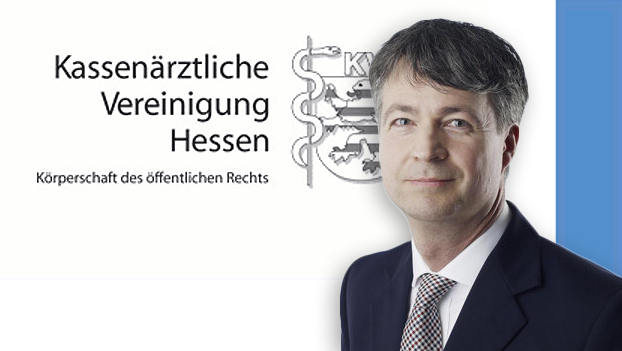Pharma Reimbursement in Germany: Through the Eyes of a Budget Holder
AMNOG changed the reimbursement landscape within Germany and the effects of the radical new legislation continue to reverberate throughout the industry.

At first the regulations were only applied to new products entering the market, but this is no longer the case. The G-BA is now going to apply the AMNOG framework to in-market products too, and pharma must conform.
Change will not be simple, says Dr. Harald Herholz, Head Drug Reimbursement, Kassenärztliche Vereinigung Hessen, “the ultimate goal for the G-BA would be to have all products in Germany assessed according to the AMNOG requirements. This is not yet the case and it is certainly a challenge making this a reality. The penetration of this new mindset that this is the way products will now be assessed, into the whole drug market, is a challenge.”
The ultimate goal for the G-BA would be to have all products in Germany assessed according to the AMNOG requirements.
As change occurs, it will not go unnoticed, and the impact on reimbursement for in-market products will be huge. Dr. Herholz notes that, “for many it will come as a bit of a shock.” It is certainly true that the situation for in-market products which launched before the introduction of AMNOG will be radically different. Prior to this change, the products which had launched before the initial introduction of AMNOG were effectively in the best possible situation. Dr. Herholz observes, “they still had patent protection, they did not have to go through the AMNOG demonstration of value procedures and they were able to establish a price under the free pricing regulations. These products always had too high a price; they would have the highest price in the EU. These drugs felt so safe, even after the introduction of AMNOG, the industry really thought nothing can happen to us. It was maybe the best situation of all drugs.”
The new AMNOG law, was a game-changer here in Germany... and now in-market products will have to adapt too.
Now that the G-BA will apply the new AMNOG framework to in-market drugs, the situation for these products will not be so easy. Manufacturers have to submit a value dossier which demonstrates comparative effectiveness in order to maintain the premium pricing that was previously guaranteed.
Having the correct data is key to passing this process successfully, but obtaining this data is not always easy. For certain disease areas it will be a lot more challenging, however this will be reflected in the G-BA's expectations. Dr. Herholz states that “the timeframe will be longer than the usual three months, companies submitting a value dossier for an in-market product will usually get 6 months or even longer. For products in disease areas where the data is hard to collect, the G-BA will tend to be a more lax on the requirements... their expectations are on a case-by-case basis.”
So how does the sick fund actually fit into this picture? Dr. Herholz answered our question, saying, “The purpose of the sick fund is to get a lower price than we did in the past. The perception of the sick fund is that we pay the highest in the EU and this used to be true for patent protected markets and generics.” Through the process of reducing costs, Dr. Herholz emphasised that when it came to patent protected products, the sick funds did not want to put anything in place which would restrict drug choice, for example by developing some sort of formulary. Instead, the approach that they took was to offer reimbursement to everything, but with a system which ensured that this is no longer at the highest price in Europe.
The question is not, will I receive reimbursement... this is guaranteed. The question is, at what price?
Rules of engagement
With the new AMNOG system in place, the procedures for engagement and dossier submission are clear. However, Dr. Herholz notes that despite this clarity many in pharma still look for routes to go around the rules. Dr. Herholz says, “I see many companies trying to outsmart the G-BA by not submitting a finished dossier, by changing the end-points or by changing the comparator.” This is an approach which Dr. Herholz did not recommend, and he urged pharma to simply stick to the guidelines.
The people paying for the drug have the right to see outcome data, so accept this and try and deliver what they want to see.
Another issue that Dr. Herholz has become aware of has been happening at a regional level. Dr. Herholz has noticed cases whereby pharma have attempted to negotiate exemptions from efficiency audits with sick funds, but have gone about the process in the wrong way. Dr. Herholz says “I have seen examples where pharma have been engaging with physicians and not representing the whole truth.” Again, Dr. Herholz reiterates, “this is not the way to go forward, we have clear procedures in place... yet people still try!”
Dr. Herholz's final advice to pharma is to accept the new reimbursement reality which is now in Germany, even though it may seem tough. Dr. Herholz concludes, “There are new rules of play here now, and AMNOG will be here in Germany for many, many years in the future. Don't just accept these rules, but try and fulfil these requirements that they have. Don't always try and start a general conversation about the concepts and trying to abolish the new system. AMNOG is here to stay.”
Do you want to get your payer engagement strategy right? Oncology Market Access Europe 2013 will focus on successfully engaging with stakeholders to ensure a fair price for your product. This two day conference and forum provides unparalleled engagement opportunities with decision making payers and will explain exactly what all stakeholders want to see from your value propositions. To find out more visit the official website.
